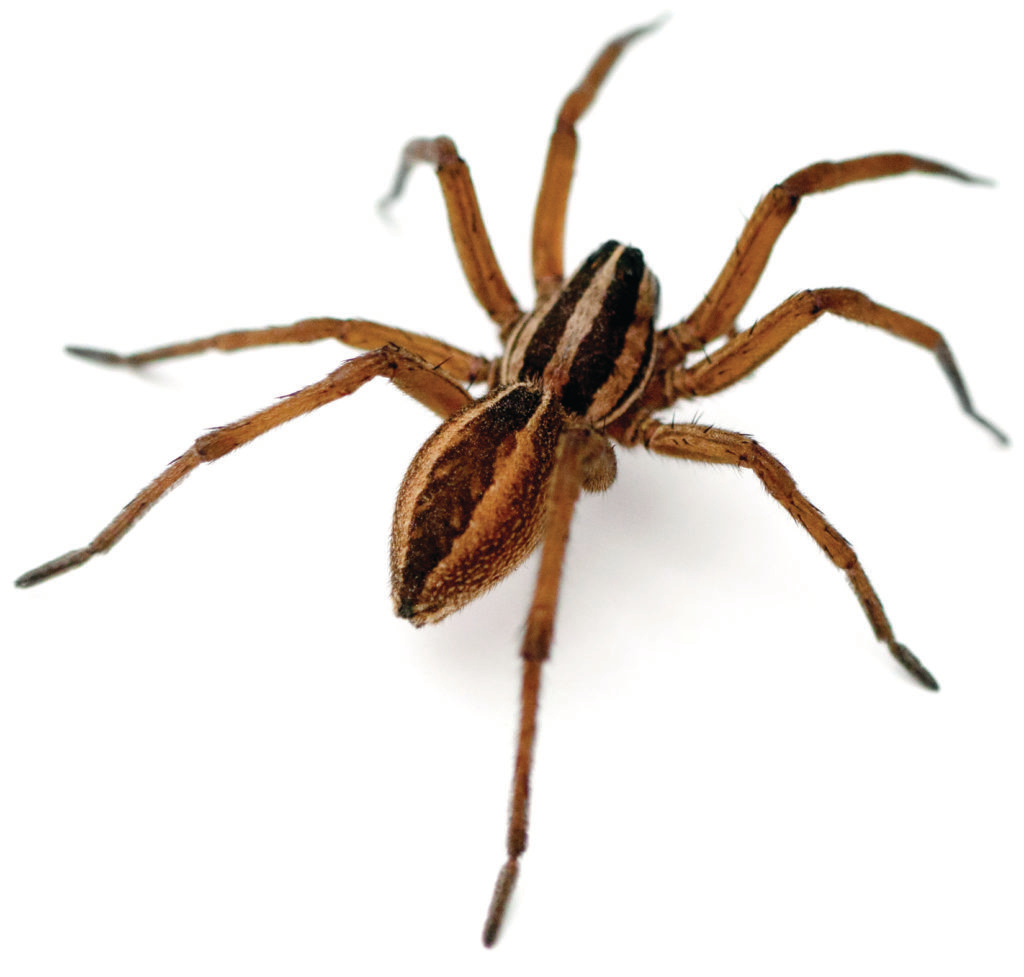My house is already festooned for Halloween thanks to a large, industrious and talented crew of eight-legged decorators, and judging from social media posts, it appears similar crews have been at work everywhere.
These decorators are of course the spiders — mostly the orb weaver varieties — that we’ve been running into (literally) in our yards and gardens ever since summer and which tend to become even more noticeable in the fall as they mate and lay eggs or prepare to overwinter as pregnant females.
The prevalence of webs may be one reason spiders are closely associated with Halloween, but their seasonal ill repute is no doubt compounded by age-old superstitions portraying them as the wicked consorts of witches and bearers of bad omens. However, some superstitions cast spiders as harbingers of good luck and wealth, and one medieval-era superstition even asserts that seeing a spider on Halloween means the spirit of a deceased loved one is looking out for you.

Superstition aside, there is no doubt that the fear of spiders is real; in fact, arachnophobia is one of the most common animal phobias in the world. There’s some speculation that this is a genetic or pre-programmed human trait, though studies have also shown that it’s their bulbous abdomens, hairy coverings and especially their long legs and erratic movements that elicit the greatest “eek” factor.
Still, there is little to fear and much to appreciate about spiders, says Drew Hataway, an associate professor of biological and environmental sciences at Samford University in Birmingham. Hataway, who wasn’t born a spider fan, fell under their charms as an undergraduate student when he helped former Samford biology professors W. Mike Howell and the late Ronald Jenkins take photographs for their 2004 book, “Spiders of the Eastern United States: A Photographic Guide.”
Hataway went on to assist Howell and Jenkins in a study using the Santa Rosa wolf spider, a small white spider that lives on beach dunes, as an indicator species to measure pre- and post-hurricane dune health along the Gulf Coast. After spending time with spiders, Hataway became fascinated — dare we say enchanted — by these amazing arthropods and has continued to study wolf spiders as harbingers of other environmental changes such as wildfires and beach development.
According to Hataway, spiders are diverse, fascinating and abundant in Alabama. With some 95 species indigenous to the state, “You’re never more than eight feet away from a spider (pun intended),” Hataway says, but they are here to help. They manufacture stronger-than-steel silk, which in some species creates those amazing and gorgeous webs and also has medicinal applications and was even used to make a spooky-cool brand of Nike shoes, and spiders are also incredible engineers. Just look at a few webs for proof.

But it’s their role in our ecosystems that make them especially special.
“Spiders are predators that (primarily) eat insects but they are also prey for birds and bats,” Hataway says, which makes them integral to our food web. “In the major food systems of Alabama, they sit right in the middle of everything.”
In addition, as spiders eat insects (and sometimes larger prey like worms, snails, frogs and lizards), they help control pest populations, which also benefits humankind. Some, such as granddaddy long legs (also known as “harvestmen,” which aren’t true spiders but are in the arachnid family) are used as biological control agents to control aphids and other crop borers in farm fields and gardens.
All true spiders do produce and use venom, but few pose a significant threat so there’s no need to get rid of them. As with snakes, Hataway’s advice is “Don’t touch them if you don’t have to.” Instead, appreciate them from afar for all their many attributes and, as Hataway says, especially for “what’s most important — spiders are part of the greater creation.”
To learn more about spiders, Hataway suggests using the iNaturalist app, where you can also become a “citizen scientist” by reporting spider sightings. Or check out the al.com article “Spiders of Alabama: 58 Spiders You Should Know.”
Katie Jackson is a freelance writer and editor based in Opelika, Alabama. Contact her at [email protected].




